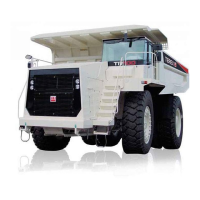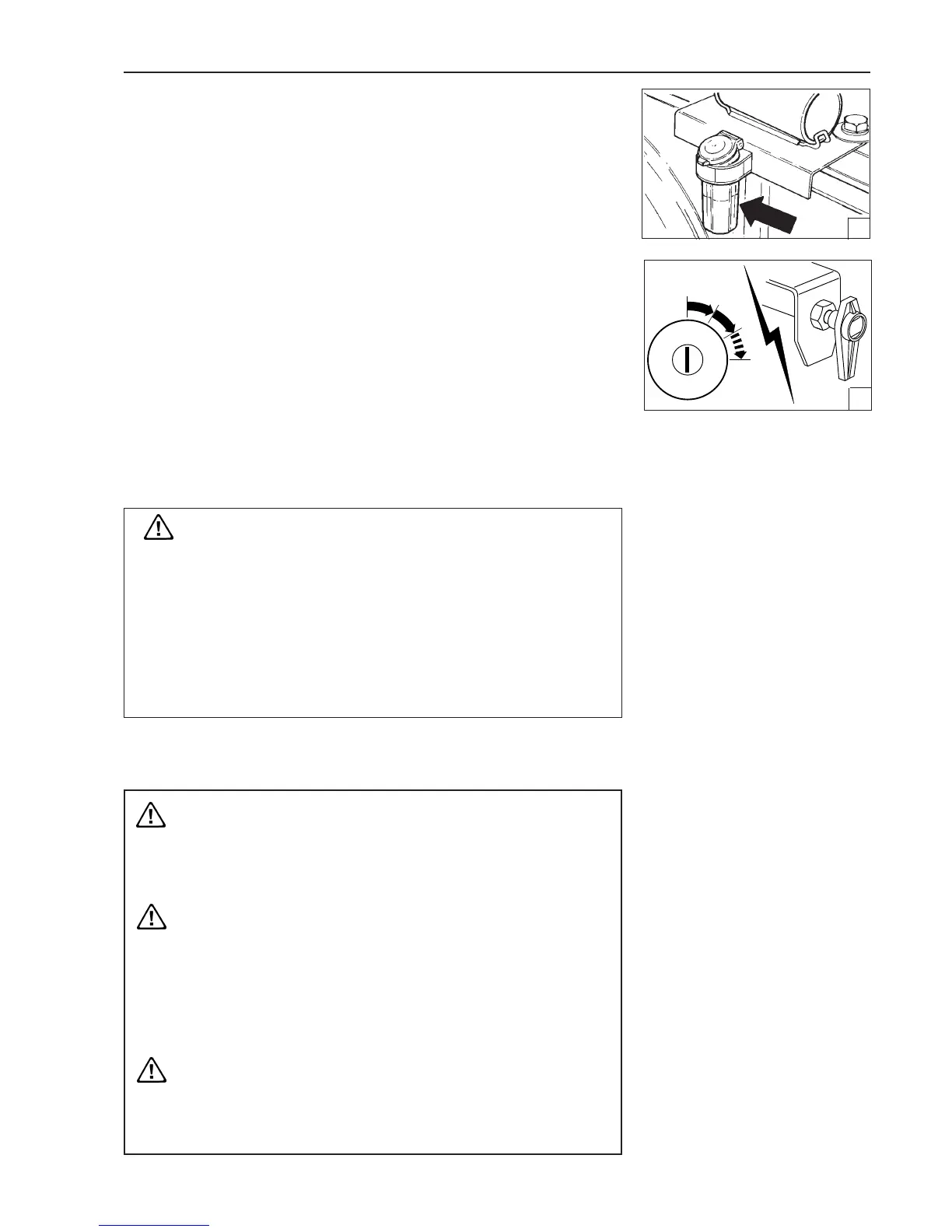4-10
Operating the Truck
STARTING THE ENGINE AT LOW AMBIENT
TEMPERATURES {Below 0 °C (32 °F)}
Follow steps 1 through 5 for 'Starting the engine' as described on page 4-8
then proceed as follows:
1. Fill starting aid reservoir if required. To fill, raise the cover of the reservoir
and push the filler can, head downwards, firmly over the filler valve of the
reservoir. Fill the transparent reservoir up to, but not over the 'MAXI' mark.
2. Turn key switch clockwise to position '2'. Press warning light test switch to
test operation of warning lights. Turn key further clockwise against spring
pressure to position '3' to crank the engine. When cranking has commenced,
operate the starting pilot pump. When the engine starts and runs, release
starter key and stop pumping. If necessary, further short applications can be
made in order to keep the engine running.
DO NOT use excessive starting fluid during starting or after the engine is
running.
3. Follow normal starting procedures but limit engine speed to 1 200 rev/min
and run for two to five minutes, depending on the temperature. Before moving,
operate the body control lever to raise and lower the body with no load. Turn
the steering wheel from lock to lock then straight ahead. These actions will
circulate warm oil throughout the hydraulic systems.
Starting fluid is poisonous and flammable. Breathing vapours or
repeated contact with skin can cause personal injury. Use only in
well ventilated areas. Use with care to avoid fires. Do not smoke when
changing cylinders. Do not store cylinders in the operators
compartment, living areas, in direct sunlight or at temperatures above
49
0
C (102
0
F). Discard cylinders properly. Do not puncture or burn
cylinders. Keep cylinders out of the reach of unauthorized
personnel.
STARTING THE ENGINE WITH JUMPER CABLES
Batteries contain sulfuric acid and can emit hydrogen gas. Check
for required voltage and polarity connections to discharged
batteries.
Excessive booster voltage and/or incorrect jumper cable
connections, open flames, lighted cigars, or other ignition sources
can cause battery explosion/fire. Do not lean over batteries, and
always wear safety glasses, face shield, safety gloves, and any
other appropriate safety equipment when working with or near
battery.
Do not jump start a vehicle by using arc welding equipment.
Currents and voltages are dangerously high and cannot be
sufficiently reduced to make the method safe.
1
2
269
1035

